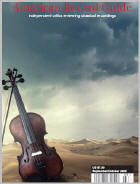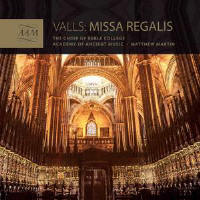Texte paru dans: / Appeared in: |
|
|
Outil de traduction ~ (Très approximatif) |
|
|
Reviewer: Charles
Brewer
While there are at least four
recordings of Francisco Valls's most famous work, his Scala Aretina
Mass from 1704 (Nov/Dec 1993, Sept/ Oct 1995, May/June 2015, May/June 2018)
for three choirs of vocalists and a fourth "choir" of instrumentalists, his
smaller-scale Masses have not been as often recorded (in contrast to his
other liturgical music, Jan/Feb 2012 & May/June 2016). A recording of two
more modest Masses (in the First and Fourth Tone) was given a tepid review
from Mr Gatens (July/Aug 2007). Fortunately, that is not the case for this
first recording of one of Valls's last compositions, composed in 1740 for
King Joao V of Portugal. The title page dedication of the manuscript for the
Royal Mass included Valls's comment: "Sic cecinit prope Septuagenarius
Cygnus" (Thus has sounded the almost 70 year old swan). Like the earlier
Scala Aretina Mass and the Ut Quant Laxis Mass, the Royal Mass is
based on the Guidonian hexachord, but rather then just the rising and
falling pattern of ut re mi fa sol la, Valls devised three musical motives
from the six pitches that he noted on the title page, which he integrated
into the polyphonic fabric created by the five voices (plus continuo). While
the Masses included on the 2007 recording are much more reserved in style,
the polyphony in the Royal Mass requires a virtuosity and dexterity from all
the voice parts and the 22 singers and the continuo section (bass violin,
ducian, and organ) are ably guided by Matthew Martin. While it would have
been appropriate to add some of Valls's other liturgical music to this
rather short recording, Martin adds three organ tientos, two by
Francisco Corea de Arouxo and one by Juan Bautista José Cabinilles, as
musical interludes. The booklet essay is very informative both about the
Mass and the organ works, and does include the text and translation for the
Mass (though it seems to be a local musical practice not to include a 'Benedictus'
in the 'Sanctus' movement). | |
|
|
|
|
Cliquez l'un ou l'autre
bouton pour découvrir bien d'autres critiques de CD |
|




